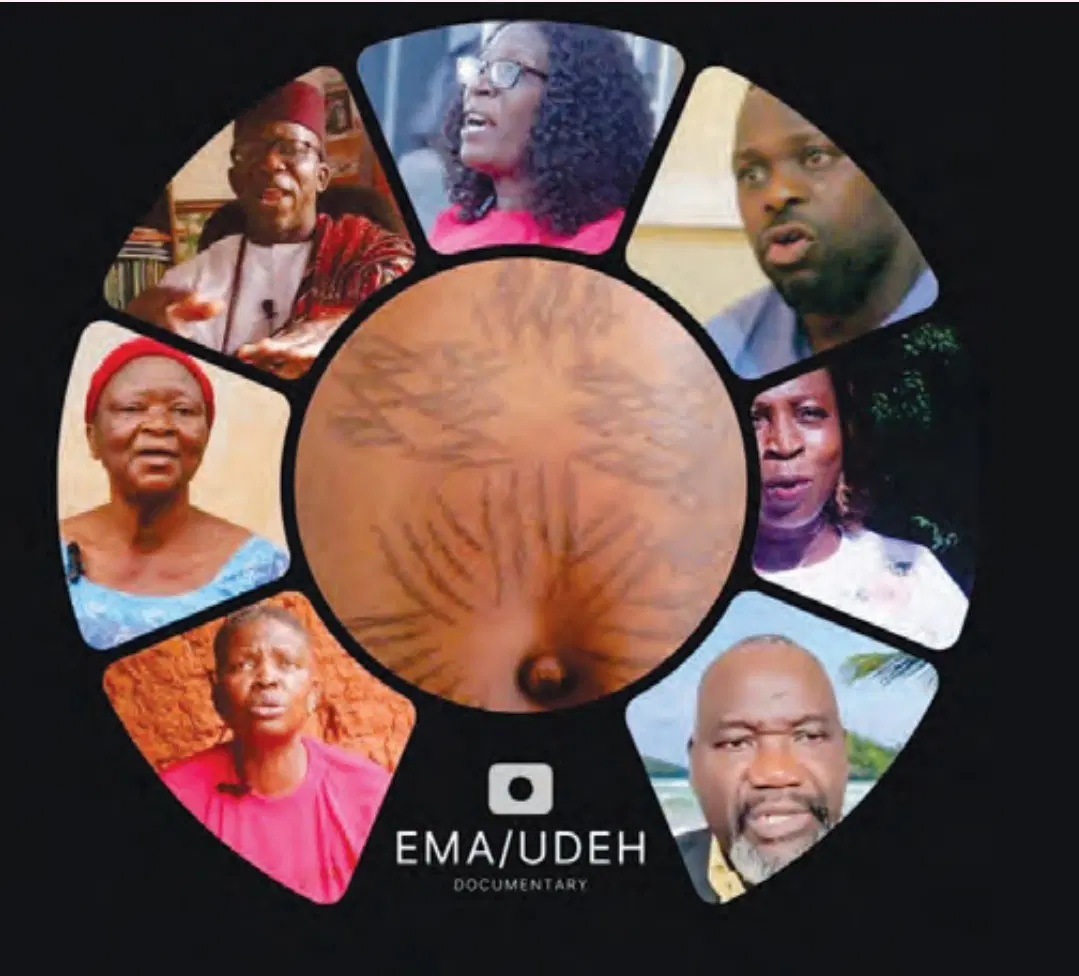To promote the rich history and cultural heritage of the Esan people, poet and festival administrator Samuel Osaze has released a new documentary titled Ema/Udeh (Ancient Healing Tattoo of the Esan People). This legacy project explores the traditional body marking phenomenon, highlighting its multiple functionalities and cultural significance.
The film aims to depict the ancient practice of Ema/Udeh without bias, engaging with practitioners and individuals from various backgrounds to foster understanding. Now available for worldwide screening, the documentary features contributions from university professors and orthodox medical experts, presenting a diverse range of views on the intersection of traditional practices and modern medical methods.
Osaze believes that encouraging dialogue on this topic will enhance healthcare quality through collaboration between traditional and orthodox approaches. The documentary showcases prominent academic scholars, including Professor Mariam Asabe Iyeh, a Professor of Dance Studies and Performance Aesthetics, Professor Matthew A. Izibili of Philosophy, Dr. Aloja Airewele, and Dr. Abel Toms-Oriakhi. The documentary spotlights female Ema/Udeh tattoo artists, such as Justina Okoh, Martha Wilson, and Anthonia Imhanlu, who are motivated by a desire to save lives rather than profit from their craft.
Produced and directed by Samuel Osaze, the documentary raises important questions about the Ema/Udeh practice, such as:
- Are there grounds for comparison between modern tattoos and ancient Esan body markings?
- How is Ema/Udeh performed?
- What factors contribute to its ongoing popularity compared to modern medical methods?
- How genuine is the claim that splenomegaly cannot be treated by orthodox medical methods?
- Is splenomegaly endemic to the Esan/Edo people, and how do individuals from other ethnic groups treat the condition?
- How can the ancient practice be improved and aligned with global healthcare standards?
Osaze emphasizes that Ema/Udeh is not only a healing practice but also an art form, creating a “mobile canvas” that showcases the artistic talents of the tattoo artist. He highlights the dual role of Ema/Udeh artists as healers and artists, merging medicine and art in a unique way.
The documentary examines Ema/Udeh from four critical dimensions: aesthetics, therapeutics, identity, and spirituality. These aspects distinguish Ema/Udeh from other forms of scarification and underline its cultural significance.
Osaze envisions a future where Ema/Udeh can be recognized beyond its medicinal and aesthetic values, suggesting that the practice could evolve from private exhibitions to broader public displays, allowing the curative and artistic patterns to reach a wider audience.

